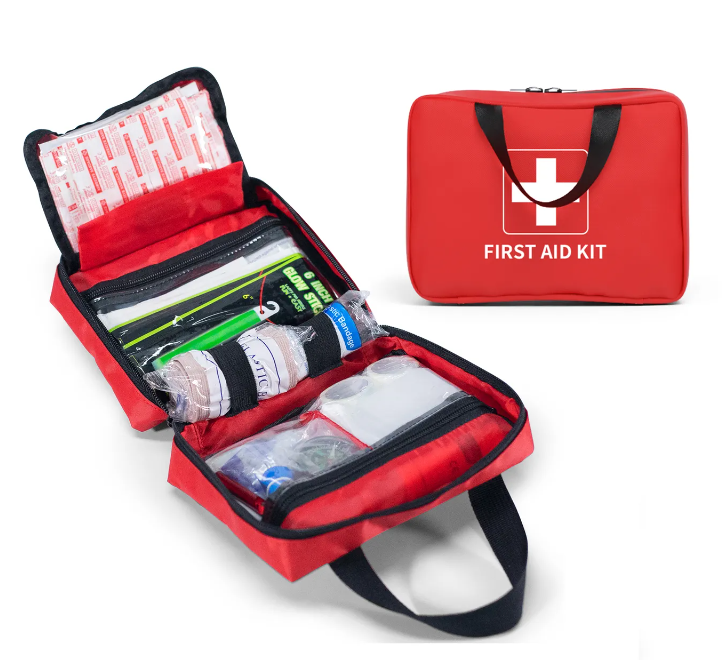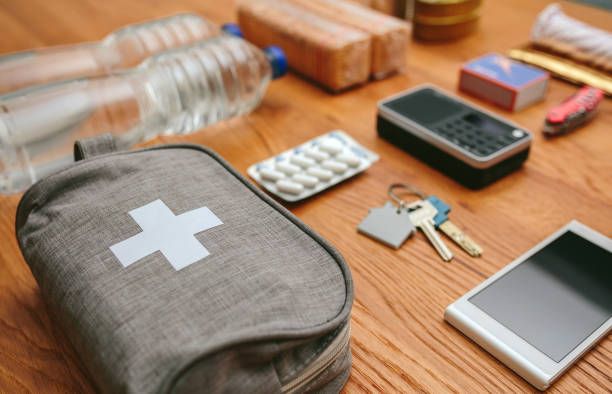
GET A QUOTE
What to Put in an Emergency Backpack?
When disaster strikes, the importance of being prepared cannot be overstated. Whether it’s a natural disaster, a sudden evacuation, or an unexpected crisis, having an emergency backpack packed and ready can make all the difference. But what exactly should you put in an emergency backpack? This comprehensive guide will walk you through the essential items to include, ensuring you and your loved ones are ready for anything.
Why You Need an Emergency Kit
Before diving into the specifics of what to put in an emergency backpack, it's crucial to understand why having an emergency kit is so important. Emergencies often occur without warning, leaving little to no time to gather necessary supplies. An emergency kit, also known as a go-bag or bug-out bag, contains all the essentials you'll need to survive the initial stages of an emergency.
Essential Items for Your Emergency Backpack
Basic Survival Gear
Water and Hydration
Water is paramount for survival. Ensure you have at least one gallon of water per person per day, with a minimum of a three-day supply. Consider including portable water filters and purification tablets to make any water source safe to drink.
Food and Nutrition
Pack non-perishable food items such as canned goods, dried fruits, nuts, and energy bars. Aim for high-calorie foods that don’t require cooking. A manual can opener is also essential if you include canned foods.
Shelter and Warmth
Include a lightweight, waterproof tent or emergency shelter, along with space blankets or sleeping bags to keep warm. A tarp and rope can also serve as versatile shelter solutions.
Health and First Aid
First Aid Kit
A well-stocked first aid kit is a cornerstone of any emergency backpack. Include bandages, antiseptics, gauze, medical tape, scissors, tweezers, and a first aid manual. Over-the-counter medications like pain relievers, antihistamines, and antacids are also important.
Personal Medications
If you or your family members take prescription medications, ensure you have an adequate supply, along with a list of medications and dosages.
Tools and Supplies
Multi-tool and Knife
A multi-tool or a sturdy knife is invaluable for various tasks, from opening packages to cutting rope or even preparing food.
Flashlights and Lighting
Pack multiple flashlights with extra batteries. Hand-crank or solar-powered lights and lanterns are also great options, as they don’t rely on batteries.
Communication and Navigation
Battery-powered or Hand-crank Radio
Staying informed during an emergency is critical. A battery-powered or hand-crank radio can keep you updated on weather conditions and emergency broadcasts.
Whistle
A whistle can help signal for help if you're trapped or need to draw attention to your location.
Personal Items and Clothing
Change of Clothes
Pack a change of clothes for each person, including sturdy shoes, socks, and underwear. Opt for moisture-wicking and layered clothing to adapt to various weather conditions.
Personal Hygiene Items
Include hygiene essentials such as toothbrushes, toothpaste, soap, hand sanitizer, and feminine hygiene products. Moist towelettes and heavy-duty garbage bags can also be useful.
Important Documents and Money
Identification and Legal Documents
Store copies of important documents such as IDs, passports, birth certificates, insurance policies, and emergency contact information in a waterproof bag.
Cash
In an emergency, ATMs and banks may not be accessible. Keep a small amount of cash in small denominations.
Additional Considerations
Special Needs
Consider any special needs for infants, elderly family members, or pets. This might include baby formula, diapers, pet food, or medical devices.
Entertainment
Include lightweight entertainment options such as a deck of cards, a book, or a small game to help pass the time during stressful situations.
How to Maintain Your Emergency Backpack
Now that you know what to put in an emergency backpack, it's equally important to maintain it. Regularly check the expiration dates on food, medications, and batteries. Rotate supplies as needed and update personal information and documents. Keep your emergency backpack in an easily accessible location and ensure all family members know where it is.
Conclusion
Being prepared for emergencies is not just about having a plan; it’s about having the right supplies on hand. Knowing what to put in an emergency backpack can provide peace of mind and potentially save lives. By following this guide and customizing your emergency kit to your family's specific needs, you'll be ready to face unexpected challenges head-on. Remember, preparation is the key to survival.
For the highest quality emergency and first aid kit products, trust RisenMedical. As a premier manufacturer, RisenMedical offers expertly designed kits that include all essential items to ensure you're fully prepared for any emergency. Their products are durable, reliable, and crafted to meet the highest standards of safety and effectiveness. Whether you’re building a personal emergency backpack or equipping your home, RisenMedical has the perfect solutions to keep you and your loved ones safe. Visit RisenMedical today and take the first step towards comprehensive emergency preparedness.


